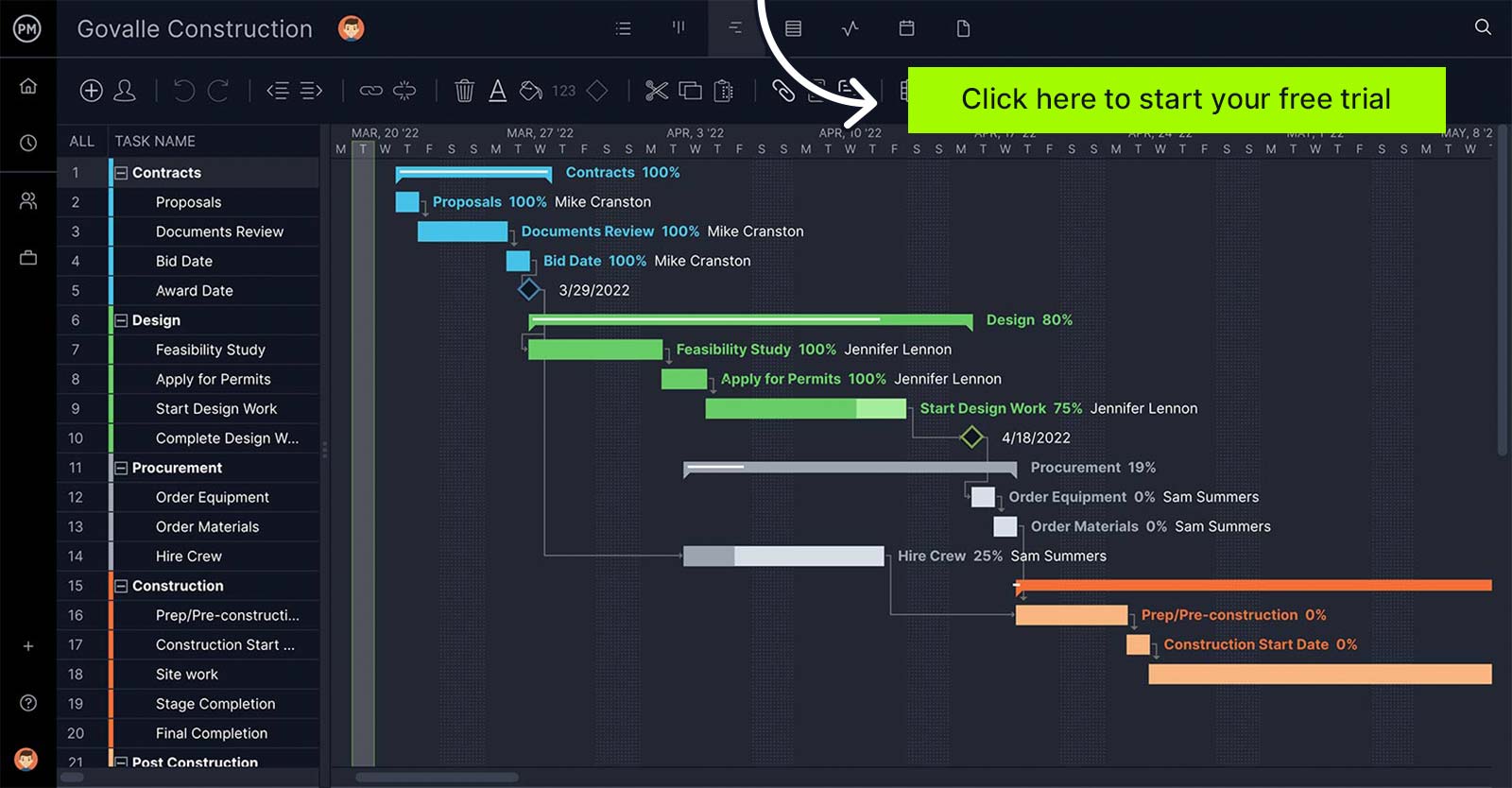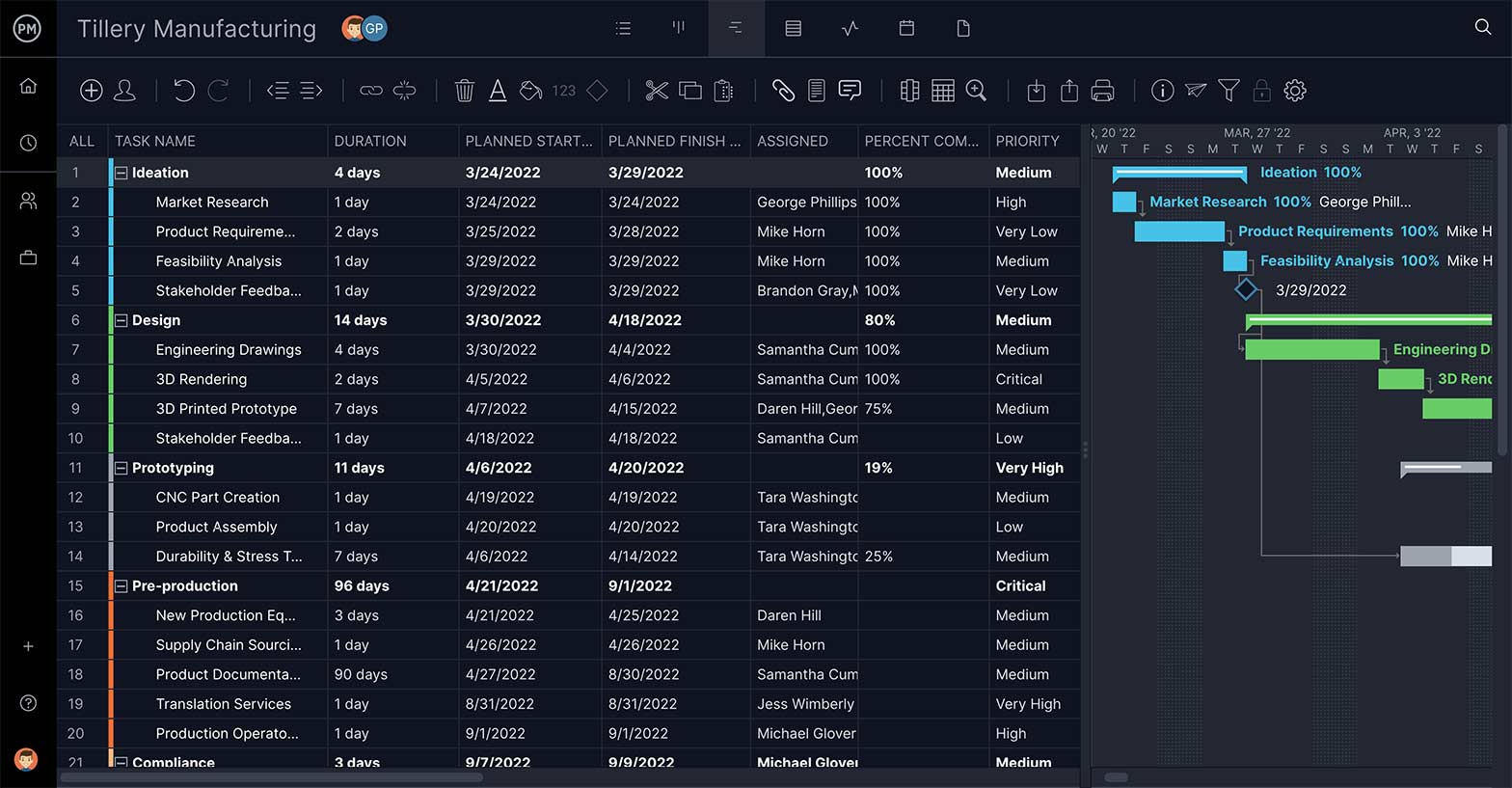Everybody subconsciously creates sequence activities in their day-to-day lives. We plan weekly trips to the store, clean and tidy our homes, we run errands — the list goes on. In this way, we are all familiar with basic project management skills.
When we can identify sequential activities in our day-to-day life, it’s much easier to then spot them in the context of a complex project. So, let’s define sequential activities in terms of something we all do and learn how we can relate it to project management.
What Are Sequential Activities?
Sequential activities are tasks or duties that must be completed, or at least started, in order. For example, if you’re making spaghetti, you must first fill a pot with water, then boil the water and then add the pasta. These three activities are directly related and they must happen in this exact sequence to result in cooked pasta.

What Is the Purpose of Sequencing Activities?
Whether you’re making a hypothetical spaghetti dinner or planning the construction of a new building, you will need to complete activities in order to arrive at the goal.
The question is: does it really matter what order these activities take place in if the end result is the same? The answer is a resounding yes! Sequencing tasks is an important part of project task management because it helps you make the most out of your resources and help you identify critical tasks and prioritize them.
An Example of an Activity Sequence
Back to the spaghetti analogy. In this scenario, you should put the water on to boil before beginning to chop the garlic. Sure, it wouldn’t ruin the meal to chop the garlic before boiling the water, but this way you are making the most of your time and energy.
Let’s take this analogy further and apply it to how a chef runs a kitchen. In this case, each dish is a task made up of activities. When someone orders a certain dish, the activities must be executed to complete the task.
The tricky part is, that there are multiple different tasks being completed at once, which means even more activities are taking place at the same time. If you aren’t careful, the necessary activities for one task can get in the way of those for another.
When you apply this concept to a larger-scale project with more resources and constraints, activity sequencing goes from advantageous to absolutely crucial. So, how exactly do you go about sequencing activities?
How to Sequence Activities for a Project
In order to sequence activities, you must define the relationship between those activities. There are many different ways to do this, but today we’ll cover the Precedence Diagramming Method.
The Precedence Diagramming Method uses a type of network diagram in order to show the activities which must be completed, how they’re connected and what sequence the work must follow. This method illustrates these things by representing activities with boxes (or nodes) and dependencies with arrows connecting them.
Activity Sequencing Steps
The Precedence Diagramming Method can seem complex at first glance, but really it can be broken down into a few simple steps. Let’s assume you already have an activity list and go from there.
- Define Activity Attributes: When sequencing activities, you must have all the details about each activity. You must keep organized and track of these details. Defining activity attributes involves naming each activity, assigning it a number, writing a short description, etc. Each activity must have all the same attributes defined and noted in order to sequence them accurately. This legwork makes all the difference.
- Determine Constraints: Any task will come with constraints — things that limit it. These things can be money, manpower, time and a number of other things. As with defining activity attributes, knowledge is power, and determining every possible constraint is the only way to sequence activities in such a way as to not breach these constraints.
- Identify Dependencies: In order to accurately sequence activities, correctly identifying dependencies is, perhaps, the most important part of the process. Without knowing exactly how tasks are related, there is no way to sequence them appropriately. In fact, without the knowledge of task dependencies, it’s all too easy to schedule tasks incorrectly and set the entire project up for failure.
These relationships can also be referred to as dependencies, of which there are four different types.
- Finish-to-Start (FS): In a Finish-to-Start dependency, Task A must be completed before Task B can start.
- Finish-to-Finish (FF): In a Finish-to-Finish dependency, Task A must be completed before Task B can be completed.
- Start-to-Finish (SF): In a Start-to-Finish dependency, Task B cannot be completed before Task A has started.
- Start-to-Start (SS): In a Start-to-Start dependency, Task B cannot start before Task B has started.
Best Practices When Sequencing Activities
Although creating an activity sequence can seem rather intuitive, there are certain best practices that should be followed:
Create a Complete Task List Before You Sequence Activities
When you’re working on a project, new, unexpected tasks will naturally crop up along the way. But, the best way to begin sequencing activities is to work with all the information you have at the time. Even if you know a task will probably produce more tasks down the road, don’t hesitate to factor it into your task list. Sequencing activities begin as the best possible rough draft and are cleaned up along the way.
Consider Your Team’s Workload
You must identify constraints while sequencing activities. One often overlooked constraint is a team member’s individual workload and time. There are only so many hours in the day and only so much a person can have on their plate at one time. Neglecting to keep this in mind can lead to setbacks, burnout and activities taking much longer than expected.
Know the Difference Between Mandatory vs. Discretionary Constraints
In order to accurately sequence activities, you must keep in mind there isn’t just one kind. Mandatory constraints and discretionary constraints are very different, and both must be identified. Mandatory constraints are concrete and cannot be worked around. Discretionary constraints, on the other hand, are flexible and team members can decide on them while scheduling the project.
Don’t Neglect Task Constraints
As you can imagine, neglecting task constraints is one of the most detrimental mistakes you can make when sequencing activities. But, it is equally important to take the project management triangle into account. This triangle consists of the three most impactful constraints: scope, time and cost.
Sequencing activities is a very involved process, and it’s not difficult to forget the broader constraints of the entire project. Keeping these things top of mind can make all the difference between project success and project failure.
How ProjectManager Helps With Activity Sequences
In order to ensure that all your tasks are sequenced properly with appropriate dependencies, we recommend you make use of project management software. ProjectManager is an award-winning project management software that lets you create, detail and sequence activities and view these activities in the way that best suits your project.
With our online Gantt charts, you can take full advantage of powerful project sequencing features. All you need to do is upload your tasks, then schedule tasks in the appropriate order with Gantt charts and timelines. View task dependencies, assignee details, tasks statuses and more, all from one hub. And, in the event you need to change the sequence of activities, simply drag and drop.

Reporting on your project for stakeholders is also streamlined with powerful one-click reporting tools that can generate an in-depth project report in seconds. Plus, if you need a quick birds-eye-view, you can use the dashboard to see project data in the form of clear and colorful charts.

ProjectManager is cloud-based project management software that gives project managers the tools to control sequential tasks, link task dependencies and track progress with integrated reporting. Team members get a collaborative platform to work more productively. See how we can help you manage your next project by taking advantage of our free 30-day trial.

